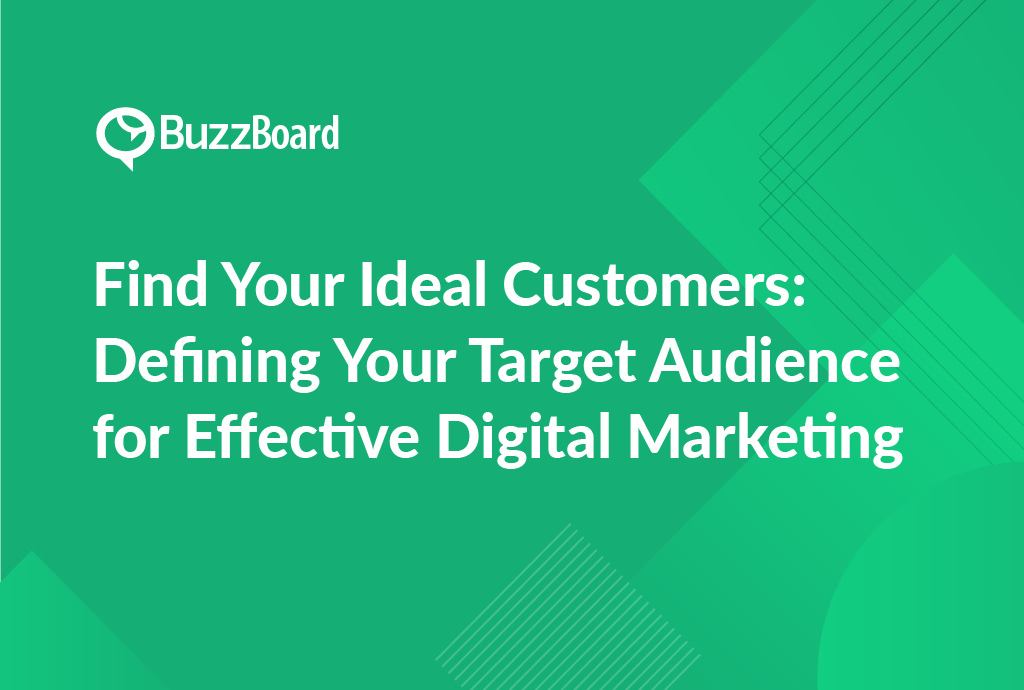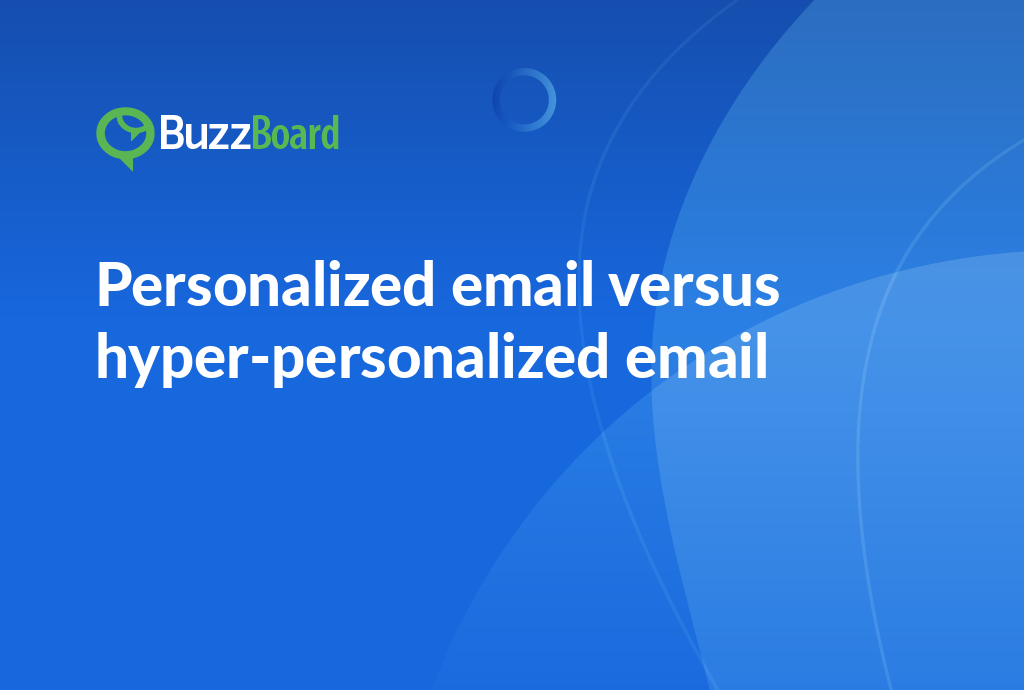Define Your Target Audience
Defining your target audience is crucial for effective digital marketing. Learn how to identify your ideal customers by understanding their demographics, behaviors, and pain points. Discover the importance of segmenting your audience and creating buyer personas to guide your marketing strategy. In this article, we’ll walk you through the steps to find your ideal customers and create a targeted marketing approach that drives real results.
Understanding the Importance of Defining a Target Audience in Small Business Digital Marketing
In the realm of digital marketing, salespeople often grapple with complex challenges. One such issue is defining a target audience effectively for small business digital marketing initiatives.
Creating a well-defined target audience lays the foundation for successful digital marketing campaigns. A beneficial strategy for streamlining this process is constructing an ‘ideal customer persona,’ a succinct profile of your perfect customer, determined through real data and informed assumptions about demographics, behavioral patterns, motivations, and goals.
Profiling a target customer requires thorough audience research. This involves understanding demographics, preferences, and behaviors relative to the business. Armed with this data, businesses can create more nuanced and successful marketing messages, optimizing their online marketing efforts.
The creation of a customer profile extends beyond identifying a large customer group. It involves narrowing down to a more specific segment for a concentrated, effective, and result-driven marketing strategy.
Identifying a target audience is instrumental in digital marketing, and salespeople must understand these aspects to create triumphant campaigns.
Understanding your target audience should not feel like an elaborate guessing game. Rather, view it as insightful research and analysis exercise that aids your small business clients in developing digital marketing strategies that genuinely connect with their customers.
Start investing your time in guiding your small business clients to understand their target audience. The more you understand the audience, the better you can serve them through your marketing campaigns.
How to Identify Your Ideal Customer Persona for Effective Online Marketing
In today’s digital landscape, understanding and leveraging your ideal customer persona is crucial for small businesses looking to make a lasting impact in the online market. By defining your target audience, you can create a more targeted and impactful marketing strategy that resonates with your ideal customer. But how do you go about identifying your ideal customer persona?
The process begins with market research, which involves gathering valuable insights into the demographics, needs, and behaviors of your target audience. This can be achieved through various techniques, including surveys, focus groups, and interviews with existing customers. By analyzing this data, you can create a comprehensive profile of your ideal customer, including their demographics, interests, financial standing, and challenges.
The ideal customer persona is a semi-fictional representation of your most valuable potential customers. It’s a detailed description of who they are, what they want, and what motivates them to make a purchase. This persona should include not only demographic information, such as age, gender, and location, but also psychographics, such as attitudes, interests, values, and lifestyle.
Understanding your ideal customer persona is essential for customizing your marketing messages and outreach efforts. By knowing what makes your target audience tick, you can tailor your marketing strategy to speak directly to their needs and desires. This approach can significantly enhance the success of your online marketing efforts, leading to increased engagement, conversion rates, and ultimately, revenue growth.
When designing your digital marketing plans, remember to keep your ideal customer persona top of mind. This means developing targeted email marketing campaigns, engaging social media content, and highly-targeted ad placements that speak directly to your target audience. By doing so, you can create a loyal customer base and drive long-term growth for your small business.
For instance, a marketing professional might create a targeted email campaign that addresses the specific pain points and interests of their ideal customer. They might craft a social media post that resonates with their target audience’s values and lifestyle. Or, they might place targeted ads that speak directly to their ideal customer’s needs and desires. By leveraging your ideal customer persona in your digital marketing strategies, you can yield promising results for your small business, including expanded customer bases and increased revenues over time.
In-Depth Analysis of Target Customer Characteristics for Designing Effective Digital Marketing Programs
In the realm of digital marketing, understanding your target customer is paramount for designing effective strategies. So, how does one identify the target audience for small business digital marketing? To develop successful marketing initiatives, it’s crucial to conduct a thorough analysis of your target customer’s characteristics. An integral part of this process is crafting the ideal customer persona.
Your customer profile should be more than mere demographics. It must provide a lucid understanding of your customers’ needs, desires, and behavioral patterns. Consider aspects like digital presence, interests, lifestyle, and purchasing behavior. Grasping these traits will enhance your marketing agency’s ability to pitch the most suitable digital marketing programs.
For instance, if your customer profile consists of young professionals, you may want to focus on social media marketing, influencer marketing, and content marketing strategies that resonate with this demographic. On the other hand, if your customer profile consists of seniors, you may want to focus on email marketing, direct mail marketing, and targeted online advertising that caters to their needs and preferences.
In addition to demographics, it’s essential to consider your target audience’s psychographics, including their values, attitudes, and lifestyle. This will help you create marketing messages that resonate with your audience and increase the effectiveness of your digital marketing programs.
Online marketing isn’t a one-size-fits-all solution, particularly for small business digital marketing. Your target audience’s predilections should be the compass guiding every facet of your marketing plan. For example, if your customer profile consists mostly of young, tech-savvy individuals, employing advanced digital marketing strategies such as influencer marketing or gamification could be more effective.
On the other hand, if your customer profile consists of older adults, you may want to focus on more traditional marketing strategies such as print advertising, direct mail marketing, and telemarketing. The key is to understand your target audience’s preferences and tailor your marketing efforts accordingly.
Keep in mind, great marketing appeals to the audience’s mind and heart. The more accurately you define your customer persona, the better you can tailor your messages for increased resonance and superior returns. By understanding your target audience’s characteristics, you can create marketing campaigns that speak directly to their needs, desires, and pain points, ultimately driving increased engagement, conversions, and revenue growth.
In conclusion, conducting an in-depth analysis of your target customer’s characteristics is crucial for designing effective digital marketing programs. By understanding your target audience’s demographics, psychographics, and behavioral patterns, you can create marketing campaigns that resonate with your audience and drive real results for your small business.
How to Create a Detailed Customer Profile for Your Small Business
Creating a detailed customer profile is a crucial step in developing a successful digital marketing strategy for your small business. By understanding your ideal customer persona, you can more accurately define your target audience and tailor your marketing efforts to resonate with them. In this section, we’ll provide a step-by-step guide on how to create a detailed customer profile for your small business.
Step 1: Identify Your Target Customer Characteristics
The first step in creating a detailed customer profile is to identify your target customer characteristics. This includes demographic information such as age, location, income, and occupation, as well as psychographic details such as interests, lifestyle choices, and values. These factors shape how your target audience interacts with online marketing, so it’s essential to gather as much relevant data as possible.
For example, if you’re a small business owner in the fashion industry, your target customer characteristics might include:
- Demographics: Women aged 25-45, living in urban areas, with a middle to upper-middle-class income
- Psychographics: Fashion-conscious, interested in sustainability, values quality over price
Step 2: Study Your Customers’ Behaviors
The next step is to study your customers’ behaviors, including how they engage with your business, their purchasing patterns, and the specific digital marketing programs they interact with. This understanding will reveal the triggers that motivate your customers to act.
For instance, if you’re a small business owner in the food industry, your customers’ behaviors might include:
- Online ordering and delivery
- Social media engagement with food-related content
- Loyalty program participation
Step 3: Consolidate Your Findings into a Customer Profile
Once you’ve collected this information, consolidate it into a customer profile. This profile will serve as a representative model of your target audience and should form the cornerstone of your digital marketing strategy.
For example, your customer profile might look like this:
- Demographics: Women aged 25-45, living in urban areas, with a middle to upper-middle-class income
- Psychographics: Fashion-conscious, interested in sustainability, values quality over price
- Behaviors: Online ordering and delivery, social media engagement with food-related content, loyalty program participation
Step 4: Refine Your Customer Profile
Remember, if your business serves multiple audience segments, it will require different customer profiles. The more detailed each profile, the better you can understand your target customers and create effective marketing strategies around them.
For instance, if you’re a small business owner in the healthcare industry, you might have multiple customer profiles for different age groups, such as:
- Young adults (18-24) interested in fitness and wellness
- Middle-aged individuals (45-64) concerned with chronic health conditions
- Seniors (65+) focused on age-related health issues
By creating detailed customer profiles for each audience segment, you can tailor your marketing efforts to resonate with each group and increase the effectiveness of your digital marketing strategy.
In conclusion, creating a detailed customer profile is a crucial step in developing a successful digital marketing strategy for your small business. By understanding your ideal customer persona, you can more accurately define your target audience and tailor your marketing efforts to resonate with them.
Practical Examples of Defining Target Audience for Successful Digital Marketing in Small Businesses
Defining the target audience is a fundamental strategy in digital marketing, and it’s particularly crucial for small businesses looking to make a lasting impact in the online market. By understanding their customer profile and characteristics, small businesses can yield remarkable results in their online marketing efforts. In this section, we’ll explore practical examples of defining target audiences for successful digital marketing in small businesses.
Let’s consider a small local bookstore that wants to boost its reach and profitability through digital marketing. The store should start by identifying its primary consumers – individuals who have a passion for reading and favor physical books over digital ones. This initial step is crucial in defining the target audience. By understanding the demographics, interests, and behaviors of these book lovers, the bookstore can create targeted marketing campaigns that resonate with its ideal customer.
For instance, the bookstore might discover that its ideal customer is not just any book lover, but potentially millennial professionals who savor reading as a treasured hobby outside their digital work life. This insight is crucial in developing targeted marketing campaigns that speak directly to their interests and preferences.
Using proven digital marketing techniques, the bookstore can engage this specific group with tailored campaigns, enhancing reach, engagement, and ultimately, sales. For example, the bookstore could create targeted social media ads that speak directly to the interests and values of its ideal customer. They might develop email marketing campaigns that offer personalized book recommendations based on the customer’s reading preferences. By leveraging this targeted approach, the bookstore can increase its online presence, drive sales, and build a loyal customer base.
The key to success in small business digital marketing is to develop a clear, precise, and appealing campaign that actively aligns with your target’s preferences and lifestyle. This requires a deep understanding of your ideal customer, including their demographics, interests, behaviors, and pain points. By doing so, small businesses can create targeted marketing campaigns that resonate with their ideal customer, drive engagement, and ultimately, drive sales.
In another example, a small bakery might define its target audience as busy professionals who crave artisanal bread and pastries. By understanding the demographics, interests, and behaviors of this group, the bakery can create targeted marketing campaigns that speak directly to their needs and desires. For instance, the bakery might develop targeted social media ads that showcase its freshly baked goods, or create email marketing campaigns that offer special promotions and discounts to its ideal customer.
In conclusion, defining the target audience is a fundamental strategy in digital marketing, and it’s particularly crucial for small businesses looking to make a lasting impact in the online market. By understanding their customer profile and characteristics, small businesses can yield remarkable results in their online marketing efforts. By developing targeted marketing campaigns that speak directly to their ideal customer, small businesses can drive engagement, increase sales, and build a loyal customer base.








